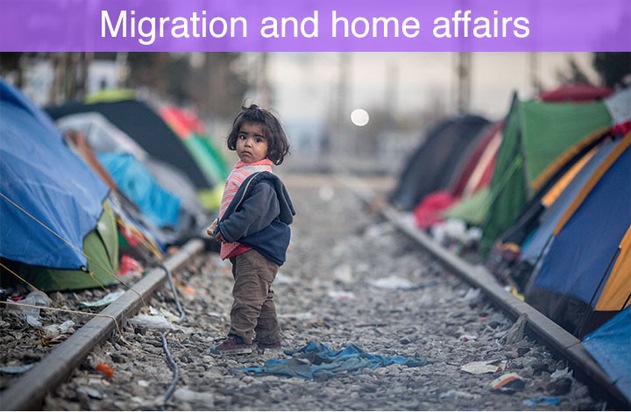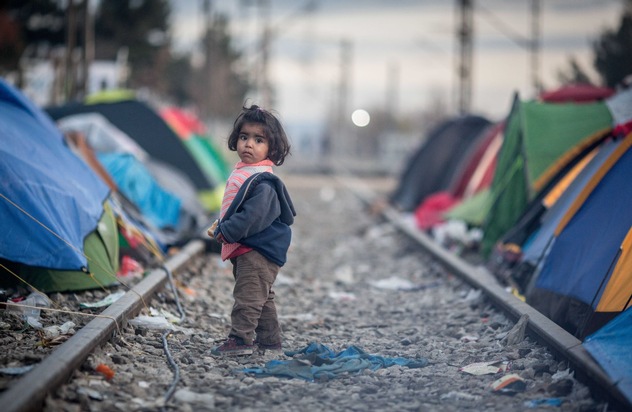A crisis with no end in sight: Europe and the refugees
When it comes to migration the European Union is faced with numerous issues. Although fewer migrants have arrived in the EU over the past several months, the problem isn't anywhere close to a resolution. In addition, the political tune is changing across the bloc: in many countries, security aspects are topping the agenda. Walls are being built, migrant routes are shifting. And those who are willing to help are often met with silence or even outright hate.
The initial position
An intensified cooperation between Italy and civil war-torn Libya had already led to a substantial decrease in migrant arrivals in the EU in the second half of 2017. The tendency became more marked in 2018: according to the United Nations' International Organisation for Migration (IOM), more than 186,700 migrants arrived in Europe in 2017. For 2018, that number decreased to around 144,100.
The following interactive infographic shows the number of asylum seekers in EU countries: http://dpaq.de/i7nBf
The turnaround in the Mediterranean
Some 80 per cent fewer migrants reached the EU via the central Mediterranean route between Libya and Italy in 2018. The new government in Rome and its right-wing Interior Minister, Matteo Savoni, have been maintaining strict anti-migratory policies since coming into power in June 2018. This has produced clear effects - but has also led to the formation of new migrant routes. Spain has replaced Italy as the main destination for migrants, followed by Greece. Those who reach Spain set out mainly from Morocco and Algeria - the Strait of Gibraltar between Morocco and Spain is only 14 kilometres wide at its narrowest point.
The crisis
The crisis is over, at least according to the President of the European Council, Donald Tusk. The numbers seem to prove him right; according to the IOM the figures for 2018 were the lowest since 2013. However, the political will for a solution is still lacking. In 2018, the EU was in a near-perpetual state of crisis with regard to migration and also made no progress in relation to a reform of the Dublin Regulation. Especially Italy with its unilateral actions presented the EU with faits accomplis.
The closed ports
After the new Italian government took office, the headlines began to change: instead of desperate people in overcrowded dinghies the news focus was on the hundreds of migrants who were stuck on rescue ships or in ports. Italian Interior Minister Matteo Salvini sent clear signals, both to the country's partners in what he labelled the "incapable and harmful" EU, from whom Rome demanded solidarity, as well as to the rescue initiatives, whom he often calls helpers of the people smugglers and whose ships he barred from all Italian ports. The fact that most other EU member states have remained silent illustrates how thoroughly opinions have turned against the civilian rescue missions. They may still be met with approval. But there has been no opposition against Italy largely withdrawing from coordinating the rescue effort and handing over to the Libyans, despite the fact that the situation in the war-torn country remains complex and conditions in the migrant camps are disastrous.
The dead
The voyage across the Mediterranean has become more dangerous for migrants. According to the United Nations refugee agency UNHCR in Geneva, last year an average six people lost their lives every day. In the year before, eight people were killed each day; however, the total number of refugees was significantly higher. The UNHCR blames the high death rate with the lower presence of civilian rescue ships off the Libyan coast.
The "solutions"
What had possibly been the EU's most concrete approach to containing migration at its source in Africa has been rejected by Tunisia, Morocco and Algeria. Brussels now wants to enter into a dialogue with Egypt about so-called migrant processing centres that conform to international standards for those rescued in the Mediterranean. However, just like its neighbours in the Maghreb, Egypt opposes such centres. Egypt's authoritarian President Abdel Fattah el-Sisi would be hard-pressed to justify domestically why rescued migrants enjoy higher living standards in Egypt than do some parts of the population.
The return of the rescue organisations
Italy's practice of closing its ports has put pressure on civilian rescue initiatives in the Mediterranean and has brought many of their missions to a standstill. In 2018, ships such as the "Sea-Watch 3" or "Lifeline" were detained by authorities, for instance by those in Malta. Others, such as the "Aquarius", which is operated by Doctors Without Borders and SOS Méditerranée, have had their flags revoked . But now the German organisation Sea Watch and Proactiva Open Arms from Spain, together with the Italian project Mediterranea are planning a permanent presence off the coast of Libya. But hardly anyone in Europe believes that thousands of people will once again be rescued. The crisis continues - but it has shifted to the European periphery.
[Attention: These images are intended exclusively for editorial use in connection with the current coverage and may be used only when using the copyright notice "Photo: dpa".]

